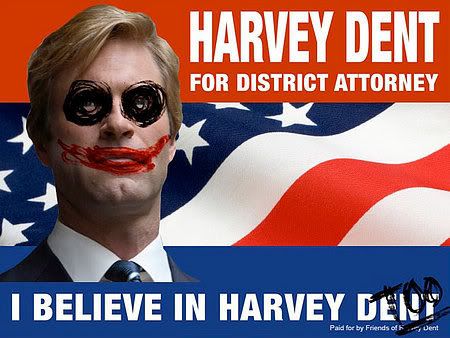Thursday, April 10, 2008
Types of games.
Almost every ARG is an amalgamation of multiple puzzles, and though the puzzles are very rarely independent of one another they are usually separated into manageable chunks. What I want to do now is dissect those chunks, what makes a puzzle work and what makes it flop? How does a single PM create a puzzle complicated enough to challenge an army of people trying to figure it out?
So far the two types of puzzles I have seen most often are based on time and obscurity.
In a time based puzzle the player may only have an hour from the time a puzzle is introduced to the time it has to be solved, for example, the player must save John from being murder at noon, despite having only having learned John was missing that morning. In this type of puzzle there need only be minor road blocks in the way of the player, since you might risk a stalemate if the puzzle is too complex.
Obscurity based puzzles are based around key bits of information that very few people are privy to. There may be a puzzle that can't be solved until someone with an in-depth knowledge of the pop art movement takes a crack at it. In this the PM is using the fact that everyone's perception of a puzzle is different, based on their life experiences.
Let me know about the other types of puzzles out there.
So far the two types of puzzles I have seen most often are based on time and obscurity.
In a time based puzzle the player may only have an hour from the time a puzzle is introduced to the time it has to be solved, for example, the player must save John from being murder at noon, despite having only having learned John was missing that morning. In this type of puzzle there need only be minor road blocks in the way of the player, since you might risk a stalemate if the puzzle is too complex.
Obscurity based puzzles are based around key bits of information that very few people are privy to. There may be a puzzle that can't be solved until someone with an in-depth knowledge of the pop art movement takes a crack at it. In this the PM is using the fact that everyone's perception of a puzzle is different, based on their life experiences.
Let me know about the other types of puzzles out there.
Thursday, April 3, 2008
Making a profitable ARG
Most Puppet Masters don't make their game to turn a profit. Unfortunately all ARGs have some cost associated with them. A PM can pay this out of pocket if his game is small (or his pockets are deep) but to do something of great scale or over an extended period of time, some kind of cash flow is required. So in this post I will look at one method of turning a profit in an ARG. To me, the most obvious solution is merchandising. But, how does a PM introduce merchandise without breaking the reality of the game, and without alienating the gaming audience?
Tie it in to the story. If you visit http://www.ibelieveinharveydent.com/, the first image you are greeted with is a group of Harvey Dent supporters wearing "I believe in Harvey Dent" t-shirts. Now, as an ad campaign, the Dark Knight ARG is obviously not hurting for money, but your ARG could take a cue from this game and use these products as a source of income. Let's say your game focuses on the cryptic journal of Kyle Stephens, a dead professor, who, up until his demise, worked for Blossburg University. You create the BU homepage, where players can find out about the late professor and his colleagues, but they will also find the school store. Here people will be able to buy stickers, t-shirts, foam fingers, shot glasses and other college merchandise. As long as the player has an emotional tie to the areas your create, you will be able to sell them on something.
It would be helpful in this scenario to have a PM blog, explaining the motivations of your sales, or to have a brief paragraph on the campus store site along the lines of "A portion of all university proceeds collected between now and the end of the semester will Kyle Stephens Foundation. It is thanks to your support that the foundation is able to thrive and move forward. Thank your for your time and donations." This isn't exactly breaking the curtain, but it does let your audience know that the money you make off of this merchandise will be put back into the game.
Your thoughts?
Tie it in to the story. If you visit http://www.ibelieveinharveydent.com/, the first image you are greeted with is a group of Harvey Dent supporters wearing "I believe in Harvey Dent" t-shirts. Now, as an ad campaign, the Dark Knight ARG is obviously not hurting for money, but your ARG could take a cue from this game and use these products as a source of income. Let's say your game focuses on the cryptic journal of Kyle Stephens, a dead professor, who, up until his demise, worked for Blossburg University. You create the BU homepage, where players can find out about the late professor and his colleagues, but they will also find the school store. Here people will be able to buy stickers, t-shirts, foam fingers, shot glasses and other college merchandise. As long as the player has an emotional tie to the areas your create, you will be able to sell them on something.
It would be helpful in this scenario to have a PM blog, explaining the motivations of your sales, or to have a brief paragraph on the campus store site along the lines of "A portion of all university proceeds collected between now and the end of the semester will Kyle Stephens Foundation. It is thanks to your support that the foundation is able to thrive and move forward. Thank your for your time and donations." This isn't exactly breaking the curtain, but it does let your audience know that the money you make off of this merchandise will be put back into the game.
Your thoughts?
Tuesday, April 1, 2008
Case study: Dark Knight. Part 1
This section of the case study will focus on the first arc of the Dark Knight ARG campaign, spanning from May 11th to May 21st.
 May 11th, 2007
May 11th, 2007
http://thedarkknight.warnerbros.com/ Official movie site opens
 May 17th, 2007
May 17th, 2007
http://thedarkknight.warnerbros.com/ Click on Bat symbol it linked to www.Ibelieveinharveydent.com a fake campaign website created for the fictional Harvey Dent.
 May 19th, 2007
May 19th, 2007
www.Ibelieveinharveydenttoo.com is discovered. It shows a defaced Harvey Dent poster and a prompt asks visitors to submit their e-mail address. For every address submitted a pixel is taken away from the Dent poster, to reveal the first image of the Joker/Heath Ledger.

May 21st, 2007
www.Ibelieveinharveydenttoo.com "Page not found" error with hidden message "See you in December".
This completes the first story arc in the Dark Knight campaign. In this arc the players are introduced to the main character, in this case the Joker. The Puppetmasters also deal with the low enrollment problems by creating a puzzle that can only be solved by having massive amounts of people submit e-mail addresses. By incorporating this e-mail hunt into a puzzle the PMs ensure that their game is spread through word of mouth, and that there are at least x number of participants before they actually start the game.
What else about this part of the campaign helped to boost its success? What, if anything, hurt it? What else was established in the limited amount of information offered?
This, and all subsiquent parts of this timeline are taken from http://analysisteamcloverfield.freeforums.org/summary-story-so-far-t629.html Thank you for the amazingly detailed analysis.
 May 11th, 2007
May 11th, 2007 http://thedarkknight.warnerbros.com/ Official movie site opens
 May 17th, 2007
May 17th, 2007 http://thedarkknight.warnerbros.com/ Click on Bat symbol it linked to www.Ibelieveinharveydent.com a fake campaign website created for the fictional Harvey Dent.
 May 19th, 2007
May 19th, 2007 www.Ibelieveinharveydenttoo.com is discovered. It shows a defaced Harvey Dent poster and a prompt asks visitors to submit their e-mail address. For every address submitted a pixel is taken away from the Dent poster, to reveal the first image of the Joker/Heath Ledger.

May 21st, 2007
www.Ibelieveinharveydenttoo.com "Page not found" error with hidden message "See you in December".
This completes the first story arc in the Dark Knight campaign. In this arc the players are introduced to the main character, in this case the Joker. The Puppetmasters also deal with the low enrollment problems by creating a puzzle that can only be solved by having massive amounts of people submit e-mail addresses. By incorporating this e-mail hunt into a puzzle the PMs ensure that their game is spread through word of mouth, and that there are at least x number of participants before they actually start the game.
What else about this part of the campaign helped to boost its success? What, if anything, hurt it? What else was established in the limited amount of information offered?
This, and all subsiquent parts of this timeline are taken from http://analysisteamcloverfield.freeforums.org/summary-story-so-far-t629.html Thank you for the amazingly detailed analysis.
Subscribe to:
Comments (Atom)